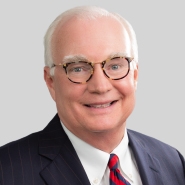Driverless cars will lead to greater product liability
Bob Hermes answered the Q&A, "Driverless cars will lead to greater product liability," in Insurance Business America.
What are your thoughts on liability for self-driving cars? Should manufacturers be held responsible for their products?
American manufacturers have long been held 'strictly liable' for defective products that cause harm to the purchaser or others while being used as intended. Driverless cars are intended to operate collision-free without human intervention. As a result, if they collide, one or more of the cars involved in the accident must have been defective.
What is the greatest risk you see when self-driving cars become more common?
Hacking. Autonomous cars will be run by computers that will be an attractive target for hackers.
How do you think driverless cars will affect the dynamics of auto insurance?
Risk, and therefore premium dollars, will shift away from automobile liability insurance since driver negligence will be virtually eliminated. However, car manufacturers will face increased product liability exposure and can be expected to purchase increased or additional coverage.
Auto insurers will also face significant changes in underwriting. Typical automobile insurance is underwritten autonomously using formulas that assess risk based on a driver's age, driving history and location. Driverless cars, however, are not influenced by driver risk. As a result, underwriting decisions will shift from a computer assessment to an analytical assessment made by an experienced underwriter.
Given that there is no historical data yet on which to base risk models, what will insurance policies for these cars look like?
Drivers will no longer require liability insurance unless states require a type of 'no fault' insurance for car owners. It is also likely that specific product liability coverages will be developed. Commercial product liability coverages will exclude automobile claims, which will require the manufacturers of driverless cars to purchase separate coverage, which will be underwritten based on an assessment of their technology, market share and quality control in manufacturing.
When do you think autonomous vehicles will reach a tipping point?
Less than 10 years. The US Transportation Department has proposed requiring all new cars to have 'talk to each other' technology. The proposal calls for 50% of new vehicles to have the technology within two years and 100% within four years.
How can insurers prepare for this eventuality?
Carriers need to engage state regulators in a dialogue about the types of coverage that will be required for owners, manufacturers and sellers of self-driving cars. Each state must decide for itself who must purchase insurance and what limits of liability are appropriate.
The article originally appeared in Insurance Business America's February 2017 issue.



